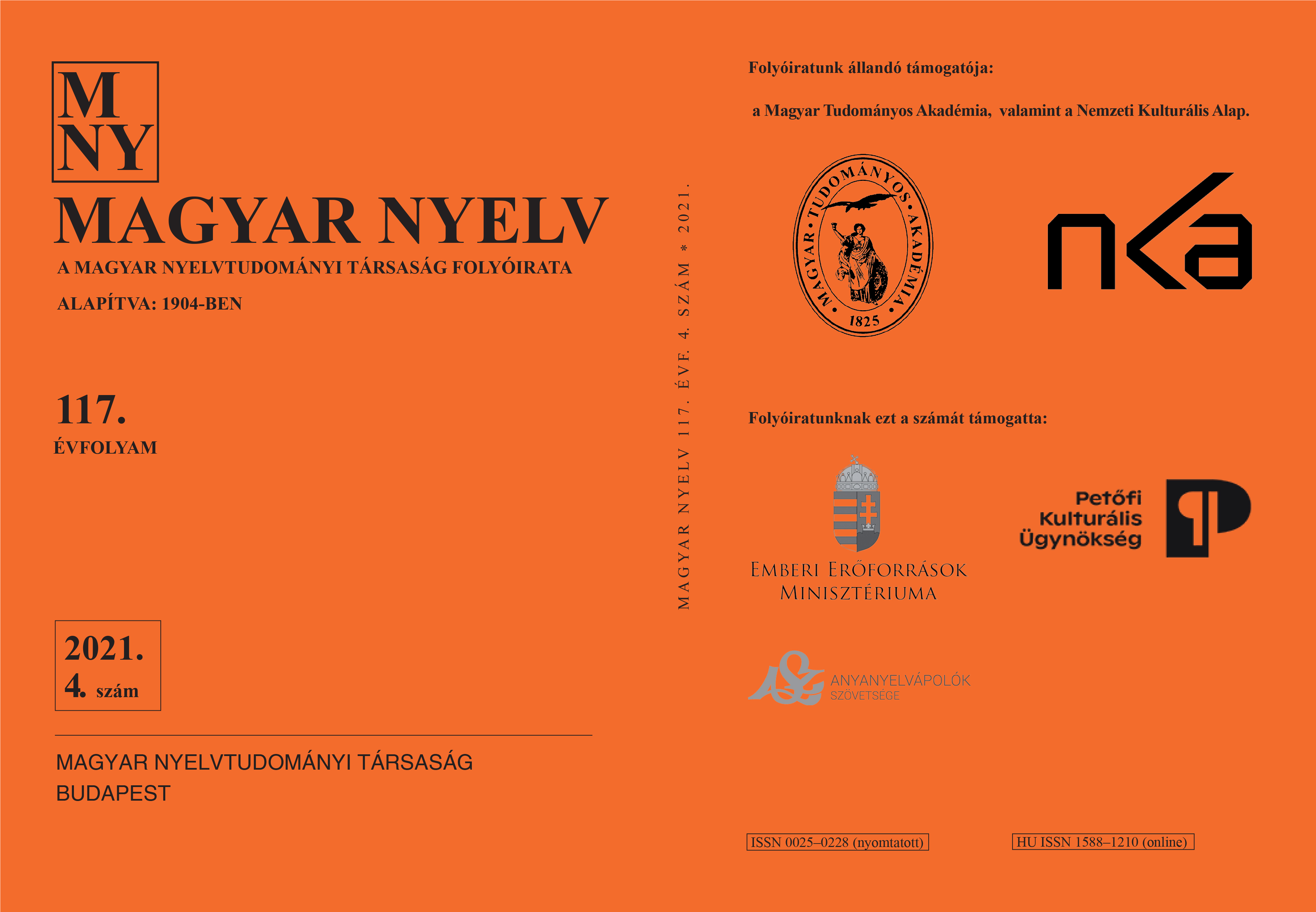The inscription of the Szarvas Needle Case
DOI:
https://doi.org/10.18349/MagyarNyelv.2021.4.403Keywords:
Carpathian Basin Rovash, computational palaeography, magic inscription, needle magic, scriptinformatics, Szarvas Needle CaseAbstract
This paper discusses previous attempts at deciphering the Rovash inscription on the Szarvas Needle Case and presents a new, suggested reading of that inscription. The authors examined the survival of the magic power of iron and needles in folk tradition, as well as the possible connections of the word üngür (used in the inscription of the Szarvas Needle Case). The grapheme set of the inscription of the Szarvas Needle Case was compared with the grapheme sets of several other Rovash script relics. It follows from the results obtained that the users of the Carpathian Basin Rovash (used for the inscription of the Szarvas Needle Case) or its predecessor, similarly to the users of the Székely-Hungarian Rovash and the Steppe Rovash or their predecessors, may have left Inner Asia after both the Aramaic-Middle Iranian scripts and the Brahmi script had affected their Rovash scripts or their supposed common ancestor, the Proto-Rovash script.
Downloads
Published
Issue
Section
License
Magyar Nyelv is a Diamond Open Access periodical. Documents can be freely downloaded and duplicated in an electronic format, and can be used unchanged and with due reference to the original source. Such use must not serve commercial purposes. In the case of any form of dissemination and use, Hungarian Copyright Act LXXVI/1999 and related laws are to be observed. The electronic version of the journal is subject to the regulations of CC BY-NC-ND (Creative Commons – Attribution-NonCommercial-NoDerivatives).
The journal permits its authors, at no cost and without any temporal limitation, to make pre-print copies of their manuscripts publicly available via email or in their own homepage or that of their institution, or in either closed or free-for-all repositories of their institutions/universities, or other non-profit websites, in the form accepted by the journal editor for publication and even containing amendments on the basis of reviewers’ comments. When the authors publicize their papers in this manner, they have to warn their readers that the manuscript at hand is not the final published version of the work. Once the paper has been published in a printed or online form, the authors are allowed (and advised) to use that (post-print) version for the above purposes. In that case, they have to indicate the exact location and other data of the journal publication. The authors retain the copyright of their papers; however, in the case of an occasional secondary publication, the bibliographical data of the first publication have to be included.



